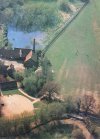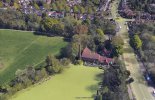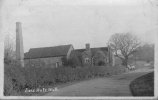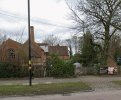-
Welcome to this forum . We are a worldwide group with a common interest in Birmingham and its history. While here, please follow a few simple rules. We ask that you respect other members, thank those who have helped you and please keep your contributions on-topic with the thread.
We do hope you enjoy your visit. BHF Admin Team
You are using an out of date browser. It may not display this or other websites correctly.
You should upgrade or use an alternative browser.
You should upgrade or use an alternative browser.
izzy eckerslike
yow've med my day yaw av
pjmburns
master brummie
Depends when that was taken as they did a massive clear out of the race and pond a couple of years ago. This was so the mill could produce flour of a saleable quality - or so I was led to believe.
It may that with closure due to covid the mill has not been used and the pond has clogged up again.
It may that with closure due to covid the mill has not been used and the pond has clogged up again.
Richard Dye
master brummie
Correct A Sparks! When a pond is relatively still there are a couple of things you can do to fix it, wait for the cool weather or as most here do put an impeller in the water to creat movement. It looks like a fountain in the pond but is very effective.Algae seems to form every year at some point on parts of the river and canal near where I live. I think the sunlight intensifies it.
izzy eckerslike
yow've med my day yaw av
It could also be Duckweed which can completely cover a pond in no time, it's now thought to be a new superfood for humans and not just Ducks. In the video you can see them harvesting itA quick view taken earlier today over the tops of the bushes shows the pond is green with algae.
Duckweed for food
Radiorails
master brummie
we should be OK then: it grows like wildfire here on our pond. 
The Mills archive has just posted this in their newsletter
This includes a link to the material they have on Sarehole. I do not think this link has been posted before:
 catalogue.millsarchive.org
catalogue.millsarchive.org
This includes a link to the material they have on Sarehole. I do not think this link has been posted before:
Term browse - Sarehole Mill, Hall Green - Archive Catalogue
Richard Dye
master brummie
This is an excellent newsletter giving wonderful insight into Tolkiens childhood and influence on this writing!The Mills archive has just posted this in their newsletter
This includes a link to the material they have on Sarehole. I do not think this link has been posted before:
Term browse - Sarehole Mill, Hall Green - Archive Catalogue
catalogue.millsarchive.org
BrummieGeoff
Sparkhill Lad
Viv .... love the photo. I believe that building is Brook Farm (on the old Brook Lane before it was re-directed), and not Sarehole Mill that was further downstream.
Yes thanks Geoff I think you’re right. There’s another photo in post #115 of this thread which is labelled Four Arches. Shall edit my post. Viv.
superdad3
master brummie
Sarehole Mill: rough timeline
Middle Ages: Sarehole Hall [=Sarehole Farm?] was the property of Maxstoke Priory [near Coleshill].
1542: Rebuilt on same site.
Early 18C: Owned by Eaves family of Sarehole Hall. In 1721 it was sold to John Taylor the joint founder of Lloyds Bank and a major landowner in Moseley.
1755: Estate leased by Matthew Boulton [senior]. When his father died the famous Matthew Boulton used the mill for making buttons and metal rolling until he moved to Soho in 1761.
1771: Mill rebuilt & remained in use until 1919.
1861: Andrews family took over the mill and George Andrews was the last miller.
c1890: Sarehole was bought by A.H. Foster a Birmingham solicitor. Did he live at the lovely old house a short way up what is now Wake Green Road? He built the three pairs of semi's [Gracewell Cottages] on the other side of the road reputedly for his servants. Tolkien lived for a time at No. 5 [now 264 Wake Green Rd].
1929: On his death in 1929 A. H. Foster gave Gracewell Cottages, other property and £30,000, to be known as the Gracewell Homes Foster Trust, for the provision of homes for necessitous spinsters or widows, preferably Birmingham residents. The trust is still very active and in 1989 built a further retirement housing complex [in Gracewell Road].
1959: He also left the mill and the meadow to the city with the proviso that George Andrews could remain there until his death [this was in 1959]. It became vandalised and derelict and BCC wanted to demolish it! A vigourous campaign by local people saved it and it re- opened to the public in 1969. It is now part of the Tolkien experience but that is another story.
This was compiled from various websites and reminded me how much "facts" vary from site to site.
There is a talk on Sat March 9th at 3pm in All Saints Church, Kings Heath entitled "There's more to Sarehole Mill than you think". Don't know more that that except tickets are £5 on the door & include tea, coffee & cake. Hope to go.
Middle Ages: Sarehole Hall [=Sarehole Farm?] was the property of Maxstoke Priory [near Coleshill].
1542: Rebuilt on same site.
Early 18C: Owned by Eaves family of Sarehole Hall. In 1721 it was sold to John Taylor the joint founder of Lloyds Bank and a major landowner in Moseley.
1755: Estate leased by Matthew Boulton [senior]. When his father died the famous Matthew Boulton used the mill for making buttons and metal rolling until he moved to Soho in 1761.
1771: Mill rebuilt & remained in use until 1919.
1861: Andrews family took over the mill and George Andrews was the last miller.
c1890: Sarehole was bought by A.H. Foster a Birmingham solicitor. Did he live at the lovely old house a short way up what is now Wake Green Road? He built the three pairs of semi's [Gracewell Cottages] on the other side of the road reputedly for his servants. Tolkien lived for a time at No. 5 [now 264 Wake Green Rd].
1929: On his death in 1929 A. H. Foster gave Gracewell Cottages, other property and £30,000, to be known as the Gracewell Homes Foster Trust, for the provision of homes for necessitous spinsters or widows, preferably Birmingham residents. The trust is still very active and in 1989 built a further retirement housing complex [in Gracewell Road].
1959: He also left the mill and the meadow to the city with the proviso that George Andrews could remain there until his death [this was in 1959]. It became vandalised and derelict and BCC wanted to demolish it! A vigourous campaign by local people saved it and it re- opened to the public in 1969. It is now part of the Tolkien experience but that is another story.
This was compiled from various websites and reminded me how much "facts" vary from site to site.
There is a talk on Sat March 9th at 3pm in All Saints Church, Kings Heath entitled "There's more to Sarehole Mill than you think". Don't know more that that except tickets are £5 on the door & include tea, coffee & cake. Hope to go.
Richard Dye
master brummie
Superdad3, were you able to go to the March 9 gathering, if so how was it anything new revealed?Sarehole Mill: rough timeline
Middle Ages: Sarehole Hall [=Sarehole Farm?] was the property of Maxstoke Priory [near Coleshill].
1542: Rebuilt on same site.
Early 18C: Owned by Eaves family of Sarehole Hall. In 1721 it was sold to John Taylor the joint founder of Lloyds Bank and a major landowner in Moseley.
1755: Estate leased by Matthew Boulton [senior]. When his father died the famous Matthew Boulton used the mill for making buttons and metal rolling until he moved to Soho in 1761.
1771: Mill rebuilt & remained in use until 1919.
1861: Andrews family took over the mill and George Andrews was the last miller.
c1890: Sarehole was bought by A.H. Foster a Birmingham solicitor. Did he live at the lovely old house a short way up what is now Wake Green Road? He built the three pairs of semi's [Gracewell Cottages] on the other side of the road reputedly for his servants. Tolkien lived for a time at No. 5 [now 264 Wake Green Rd].
1929: On his death in 1929 A. H. Foster gave Gracewell Cottages, other property and £30,000, to be known as the Gracewell Homes Foster Trust, for the provision of homes for necessitous spinsters or widows, preferably Birmingham residents. The trust is still very active and in 1989 built a further retirement housing complex [in Gracewell Road].
1959: He also left the mill and the meadow to the city with the proviso that George Andrews could remain there until his death [this was in 1959]. It became vandalised and derelict and BCC wanted to demolish it! A vigourous campaign by local people saved it and it re- opened to the public in 1969. It is now part of the Tolkien experience but that is another story.
This was compiled from various websites and reminded me how much "facts" vary from site to site.
There is a talk on Sat March 9th at 3pm in All Saints Church, Kings Heath entitled "There's more to Sarehole Mill than you think". Don't know more that that except tickets are £5 on the door & include tea, coffee & cake. Hope to go.
Richard Dye
master brummie
Superdad3, were you able to go to the March 9 gathering, if so how was it anything new revealed?Sarehole Mill: rough timeline
Middle Ages: Sarehole Hall [=Sarehole Farm?] was the property of Maxstoke Priory [near Coleshill].
1542: Rebuilt on same site.
Early 18C: Owned by Eaves family of Sarehole Hall. In 1721 it was sold to John Taylor the joint founder of Lloyds Bank and a major landowner in Moseley.
1755: Estate leased by Matthew Boulton [senior]. When his father died the famous Matthew Boulton used the mill for making buttons and metal rolling until he moved to Soho in 1761.
1771: Mill rebuilt & remained in use until 1919.
1861: Andrews family took over the mill and George Andrews was the last miller.
c1890: Sarehole was bought by A.H. Foster a Birmingham solicitor. Did he live at the lovely old house a short way up what is now Wake Green Road? He built the three pairs of semi's [Gracewell Cottages] on the other side of the road reputedly for his servants. Tolkien lived for a time at No. 5 [now 264 Wake Green Rd].
1929: On his death in 1929 A. H. Foster gave Gracewell Cottages, other property and £30,000, to be known as the Gracewell Homes Foster Trust, for the provision of homes for necessitous spinsters or widows, preferably Birmingham residents. The trust is still very active and in 1989 built a further retirement housing complex [in Gracewell Road].
1959: He also left the mill and the meadow to the city with the proviso that George Andrews could remain there until his death [this was in 1959]. It became vandalised and derelict and BCC wanted to demolish it! A vigourous campaign by local people saved it and it re- opened to the public in 1969. It is now part of the Tolkien experience but that is another story.
This was compiled from various websites and reminded me how much "facts" vary from site to site.
There is a talk on Sat March 9th at 3pm in All Saints Church, Kings Heath entitled "There's more to Sarehole Mill than you think". Don't know more that that except tickets are £5 on the door & include tea, coffee & cake. Hope to go.
superdad3
master brummie
Whoops!! Apols only just read this. It was a facinating talk by Jim Andrew [ex Science Museum}. Not at all what I expected and explained in detail how the water supply to the mill was arranged and the various leats etc. Much more interesting than it sounds and a very different approach.
That said, the reason I signed in was to post a copy of this 1905 photograph of the mill labelled [of course!] in Moseley.
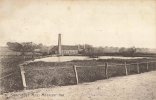
That said, the reason I signed in was to post a copy of this 1905 photograph of the mill labelled [of course!] in Moseley.

Richard Dye
master brummie
Saw used the word “leats” which I have no familiarity with. I did Google for clarification. Learned something today!Whoops!! Apols only just read this. It was a facinating talk by Jim Andrew [ex Science Museum}. Not at all what I expected and explained in detail how the water supply to the mill was arranged and the various leats etc. Much more interesting than it sounds and a very different approach.
That said, the reason I signed in was to post a copy of this 1905 photograph of the mill labelled [of course!] in Moseley.
View attachment 208021
Do you have any idea where the term came from. It is according to Google mostly used in Wales and the Southern part of England.
Sounds like a great session!
Richard Dye
master brummie
Thank you Mike, that insight much appreciated! I find that we can learn so much from the origin of words. At least from my perspective…According to the OED, the earliest use of the word was in Middle English in 1279. It probably comes from the Old English word gelǣt, which is a channel. This. in turn, comes from the Old English verb lǣtan, which means to let.
Radiorails
master brummie
It is a word that I am quite familiar with. It is common in Devon where the language has been used before the onset of influx of folk from the Midlands, London or the North.
superdad3
master brummie
Visited Sarehole Mill last Friday for the first time in decades. Very disappointed - paths in poor condition and "garden allotment" very overgrown. Cafe closed permanently but building just empty. Shop non existant and a general air of neglect about the whole site. And entrance fee too high - gave it a miss. One highlight was seeing a heron watching the pond patiently.
I know BCC is bankrupt but this is very disappointing and didn't happen overnight. Particularly disappointing in view of the renewed national interest in Tolkien.
I know BCC is bankrupt but this is very disappointing and didn't happen overnight. Particularly disappointing in view of the renewed national interest in Tolkien.
BrummieGeoff
Sparkhill Lad
An interesting old plan of the Sarehole area dated 1807. Sarehole Mill is indicated in red, and Sarehole Farm in green. It shows the River Cole flowing south to north, and the mill streams created for the mill. Sarehole Farm has now disappeared, but it was located adjacent to the current route of Wake Green Road. On the right it lists all the land associated with each property at that date.
Credit: Birmingham Library

Credit: Birmingham Library


